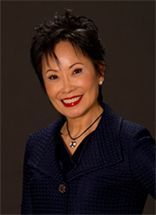Article
Improving Patients' Health From the Inside Out
Author(s):
A physician whose approach to health care is basic, talking about maintaining balance and viewing patients from the inside out.

Even at a young age, Lu-Jean Feng, MD, was on a fast track.
An immigrant from Taiwan at the age of 14, Feng was exceptionally motivated to learn English, and just as quickly worked her way into the field of medicine. While still in high school in Bethesda, Md., where her parents settled, she interned at the National Institutes of Health. A child prodigy, she graduated at the age of 16 and moved on to Yale College where she graduated cum laude in molecular biophysics and biochemistry. Then, at just 20 years of age, she enrolled in Yale’s School of Medicine.
Today, Feng operates the Lu-Jean Feng Clinic, a 15,000-square-foot outpatient surgery and health and wellness center in Pepper Pike, Ohio, a suburb of Cleveland. With a staff of more than 30 health care professionals, including a plastic surgeon, an internist, a psychiatrist, massage therapists, personal trainers and registered nurses, Feng has become an internationally recognized microvascular plastic and reconstructive surgeon.
Going it alone
Feng opened her clinic in 1998; initially it was a 6,000-square-foot facility that she says gave her more freedom to practice her own protocol. She welcomed the opportunity to choose her own nurses and choose her own anesthetic technique. But with those opportunities came challenges.
“Building an outpatient surgery center is not something that’s we’re trained to do as a plastic surgeon,” Feng admits.
In addition to regulatory issues, Fend had to deal with issues such as creating emergency preparedness plans and purchasing generators.
“There were a lot of things I had to learn,” she said. “But in doing so, I also gained more freedom to choose the best way to go through surgery. And just knowing what patients like and how to improve their experience.”
To Feng, the patient experience is the most important element in her clinic. She explains that it’s not just a question of making sure patients come out of anesthesia and are doing well, but ensuring that they have a wonderful experience — that they don’t come out feeling nauseated, or too sleepy. She likens it to landing an airplane — a gentle touchdown following a pleasant ride.
Plastic and Reconstructive Surgery
That philosophy has led to Feng developing the “painless and drainless” tummy tuck, making the most painful of elective procedures more manageable in terms of post-operative pain, and significantly reducing recovery time for her patients. The procedure, the result of a lengthy study of 209 patients published in (November 2010), the Journal of the American Society of Plastic Surgeons, reduces downtime that was two to six weeks to only three to seven days.
Inside out
Feng’s approach to health care is basic. She talks about maintaining balance, and she says it’s important to view patients — and for them to view themselves — from the inside out.
“If a patient comes to me and says, ‘Do you see these bumps on my skin? What should I do about them? How can I get rid of them?’ I tell them that from the inside, your diet really matters,” she explains. “If you eat processed foods, if you eat foods that have a lot of butter and fat and sugar, I can tell you those bumps will continue to increase. You can’t stop them. We can do skin care. We have lasers that can plane those down. But in order for you to look really good, you have to practice healthy living.”
Feng is an advocate for exercise, which has a positive effect on skin. She explains that exercise protects the DNA — the information on your gene that resides in your skin. As the skin ages it becomes thicker, then it becomes thinner, and it loses information. The cells become lazy. They don’t divide as much. They don’t produce as much collagen. And they almost forget how to do their job.
The doctor’s focus on nutrition has led to her most recent venture, FengFit — plant-based carryout cuisine. In searching for the healthiest diet she took into account how food can be used as medicine to prevent cancer and heart disease or how food can lead to beautiful skin.
“Well, the diet that comes out the best — that can do all of this — is a plant-based diet,” Feng says. “And when patients learn about this, it makes them stop and really think about what they’re doing.”
Soaring goals
If Feng seems well grounded, it’s because she is. In her spare time she enjoys traveling and reading. But last summer she stepped outside of that comfort zone and tried something a little more daring. She took flying lessons.
“It takes way too much time, so I don’t think I can continue, but I find it fascinating,” Feng admits. “The discipline involved in flying is very much like doing surgery. There’s a lot of checklists and checkpoints. You have to go through these very compulsive things that you have to check on your planes. You have to check all the gauges, you have to communicate with the control desk, and you have to really think through your weather, how you’re going to land, and be totally aware of all situations. I find that fascinating.”
Despite the fascination, Feng intends to focus her efforts on improving patients’ lives, which she says is easily the most rewarding aspect of the work she does.
“As we become better at what we do, patients do better, and they have a much better recovery and plan for their future,” she says. “They’re more aware, and they’re going to improve their health. And that’s really wonderful.”




